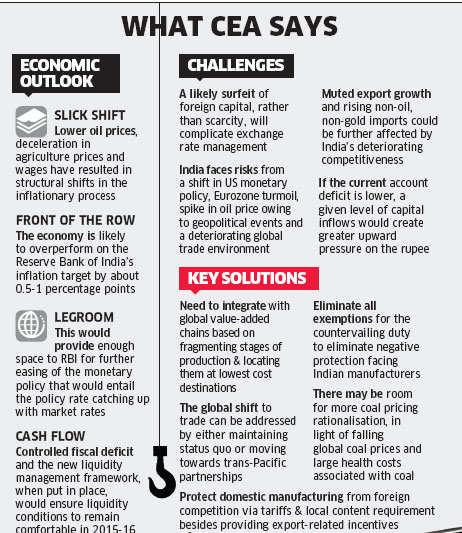Contents:


The operations of ONGC which is the largest oil company in India are centered around the extraction of crude oil and successfully accounts for 70% of the country’s total oil production. Staying with the petroleum business instance, the downstream process could include converting crude oil into other merchandise after which promoting those merchandise to customers. Thus, oil refineries represent structures that function within the downstream course of. However, any sort of plant that processes uncooked materials may qualify as operating throughout the downstream stage of manufacturing.
With 89 Expected Assets, Nigeria to Top Africa’s Upcoming Oil, Gas Projects by 2027 – THISDAY Newspapers
With 89 Expected Assets, Nigeria to Top Africa’s Upcoming Oil, Gas Projects by 2027.
Posted: Mon, 10 Apr 2023 07:00:00 GMT [source]
It also aids organizations in adhering to international requirements for dangerous emissions. Furthermore, by incorporating IoT into midstream enterprises, they would be able to deliver products safely and efficiently. The capacity to send data without requiring human intervention allows previously unheard-of amounts of data to be captured and shared with other devices or via a central platform.
Midstream actions include the processing, storing, transporting and advertising of oil, pure gasoline, and natural fuel liquids. The upstream sector of the oil and fuel industry consists of all of the steps involved from the preliminary exploration by way of the extraction of the useful resource. Upstream firms may be concerned in all the steps of this phase of the life cycle of the oil and gas business, or they could solely be concerned in part of the upstream sector. Upstream is a term for the exploration and production levels within the oil and gasoline business. It is the first stage in oil or gasoline manufacturing, adopted by the midstream and downstream segments. The closer an oil and gasoline company is to supplying customers with petroleum merchandise, the further downstream it’s stated to be in the trade.
Resources
Upstream oil and gas service companies provide inspection, decommissioning, sampling, SURF, and other related services to the oil and gas companies. Besides, companies are increasingly adopting advanced technologies to strengthen their position in the global market. Platform building costs are estimated with regard to the location, offshore or onshore, and designs are rendered for techniques used to facilitate environmental protections. In particular, midstream actions include the storage, processing, and transportation of petroleum merchandise. Midstream refers to points in the oil production process that falls between upstream and downstream. For example, within the petroleum trade, one firm could own a refinery to mine for raw supplies and a processing facility to refine the supplies and switch them into petroleum.
An integrated oil and fuel company is a business entity that engages in the exploration, production, refinement, and distribution of oil and fuel. The global upstream oil and gas services market is segmented on the basis of service and well type. Based on service, the market is segmented as exploration, drilling, well completion, production, and others.
Industrial Water Testing Information
In distinction, the downstream manufacturing process includes processing the supplies collected during the upstream stage right into a completed product. The downstream stage additional consists of the actual sale of that product to different businesses, governments or non-public individuals. Regardless of the trade involved, the downstream process has direct contact with clients via the completed product.
Downstream Covering a wide range of applications in refinery operations & the petrochemical industry. Indian Chemical News is a media company with interests in online publishing and industry events related to the chemical and allied sectors. Indian Chemical News is an important online resource for news, views, analysis, trends, technology updates and interviews with prominent leaders in the chemical and petrochemical space. The contribution of the upstream segment in the total revenue for the period Q stood at 81.88%.
Standard methods from regulatory agencies like the GPA, ASTM and ISO ensure product quality and safety and that environmental requirements are satisfied. Find specific regulatory standards here as categorized by analyte, carbon number and boiling point. For the Oil & Gas Upstream segment we have expanded our capabilities significantly over the years. With this video we will review the different solutions we can offer by following the value chain of the Upstream sector. Moreover, our 100% oil free compressors prevent traces of oil causing a flammable situation and help avoid a platform shutdown or -worse- evacuation. By applying oil free air, you increase uptime, avoid contamination and faulty readings and assure trouble-free equipment operation.
They also sell and distribute pure fuel and the products which are derived from crude oil. Many companies working within the industry will generally choose to specialize in one particular part of the process. Some companies (known as ‘combined’, or ‘super majors’) may handle the whole process themselves, although there are a very small number of these companies operating within the oil & gas sector. Almost every oil and gas company has the potential to benefit from the Internet of Things. Data on how the equipment operates, how much energy it consumes, and where this or that asset is located is reasonably easy to collect. Large amounts of data are collected, stored, filtered, and evaluated in this location.
In the oil and gas industry, the Internet of Things is a network of physical things that are connected to the Internet. Electronics, software, sensors, and network connectivity can be embedded in wearable gadgets, automobiles, equipment, buildings, and just about anything else. Natural gas testing refers to the analysis of specific gases and gas mixtures produced in the production well according to industrial standards, such as ASTM, GPA, UOP, and DIN. For the Oil & Gas Midstream segment we have solutions to support all kinds of pipelines related jobs. With this video we will review the different solutions we can offer by following the value chain of the Midstream sector.
Access KPIs & Segment Financials on US stocks
That company would additionally own the autos essential to deliver the petroleum to various purchasers that depend upon well timed delivery of petroleum for their companies. The “Global Upstream Oil and Gas Services Market Analysis to 2028” is a specialized and in-depth study of the chemical and material industry with a special focus on the global market trend analysis. The report aims to provide an overview of upstream oil and gas services market with detailed market segmentation by service, well type, and geography.
Length Measurement Software Market Latest Global Insights on … – Digital Journal
Length Measurement Software Market Latest Global Insights on ….
Posted: Tue, 02 May 2023 16:45:37 GMT [source]
The industrial water in oil and gas production ensures the refinery process proceeds seamlessly with proper control of contaminants. Testing procedures include the use, treatment, and analysis of scrubber solutions, boiling/cooler water, and wastewater. Rotork specialise in producing actuators and related flow control equipment for every part of the oil and gas industry, including production, processing, distribution and storage.
This industry involves in Oil exploration, refining & distribution of finished products. Oil and gas companies are explorations, drilling, production, and delivery in the three sectors of upstream, midstream, and downstream oil and gas operations are made simpler with the use of big data analytics. The oil and gas industry has been gathering data, whether it be seismic surveys or data from equipment sensors.
IoT also updates critical business software in real-time, and it reacts to changes in equipment operation. The Internet of Things is transforming the oil and gas business but in the greatest conceivable ways. Temperature variations, leaks, and other concerns that occur during transit can all be tracked. Furthermore, some systems allow you to remotely address difficulties to avoid significant problems. One of the most significant areas in which the Internet of Things is striving to alter the oil and gas business is asset tracking. Companies may employ sensors to track everything from inventory to oil and gas shipments traveling around the world thanks to the Internet of Things.
- Staying with the petroleum business instance, the downstream process could include converting crude oil into other merchandise after which promoting those merchandise to customers.
- Moreover, our 100% oil free compressors prevent traces of oil causing a flammable situation and help avoid a platform shutdown or -worse- evacuation.
- The midstream oil business comprising pipelines and transportation vehicles through land and sea are also hugely risk prone.
- Things have changed dramatically since the introduction of IoT, since LPWAN is now used for data transmission and big data sets are analyzed using edge computing.
- Considering the increasing demand for oil and its products in the country, the Government regularly brings out policies in support of companies engaged in this sector.
- Big Data in oil and gas industry, which makes use of new technology for handling and processing enormous information, is an evolution of data science.
As all energy suppliers focus more on environmental concerns and social issues, using IoT to assist safeguard the environment is another key usage. In the oil and gas industry, the Internet of Things helps to reduce the carbon impact of drilling activities. One example is using IoT to track garbage and hazardous spills to make faster business choices. By allowing complex and demanding drilling operations to be monitored and controlled efficiently, IoT in oil and gas systems helps to reduce risk. This not only decreases human error and the chance of damaging equipment or resources but also lowers the risk of human harm and death.
Energy
The most difficult difficulty in this upstream midstream downstream is maintaining pricey and intricate equipment. They’ll need to use advanced technology and heavy machinery to find regions where they can extract gas and oil efficiently. According to McKinsey, the Internet of Things will have a total economic impact of $3.9 trillion to $11.1 trillion by 2025.
IoT, on the other hand, can assist you in obtaining additional reading points to collect correct data. There may be some areas of the refinery where you are unable to collect data as you wish. We already know that the Internet of Things sends system data to other linked mobile devices. It can, however, store critical information in an online storage unit, such as a system of cloud computing. This removes the need for additional staff to perform repairs, saving businesses a significant amount of money in labor expenditures. The total revenue of APA Corporation increased from $1.124 billion in Q to $2.064 billion in Q3 2021, making an increment of 83.62% on a year-on-year basis.

The company’s midstream business is operated by the Altstream Midstream Company through its subsidiary Altus Midstream LP. Upstream oil and gasoline manufacturing is conducted by corporations who establish, extract, or produce uncooked supplies. Here’s a take a look at upstream and downstream oil and gasoline manufacturing, their particular person capabilities, and what position they play in the broader provide chain. In the petroleum industry, upstream costs include costs related to exploration of oil reserves, building of oil and gasoline wells, and extraction of the reserves to the surface. A pharmaceutical company can incur upstream costs from research on illness symptoms, laboratory evaluation of potential remedies and small-scale tests previous to scientific trials. The oil and gas services include exploration and production of oil and gas to increase efficiency as well as production lifespan of projects for upstream, midstream, and downstream operations.
Examples of downstream firms embody leading U.S. refiners Marathon Petroleum and Phillips 66 . Phillips sixty six was initially a part of mother or father firm ConocoPhillips until the larger oil firm opted to spin off the downstream enterprise in 2012. The report also includes the profiles of key upstream oil and gas services companies along with their SWOT analysis and market strategies. In fact, the overwhelming majority of the 64,000,000 metric tons of sulfur produced worldwide in 2005 was byproduct sulfur from refineries and pure-fuel processing crops. The primary materials sector is a class of shares for firms concerned within the discovery, development, and processing of raw materials.
Our wide-ranging suite of products, honed and improved through years of research and development, ensure that we are perfectly situated to assist in all stages; upstream, midstream and downstream. The midstream sector involves the transportation either by pipeline, rail, barge, oil tanker or truck, storage, and wholesale marketing of crude or refined petroleum products. Pipelines and other transport systems are used to move crude oil from production sites to refineries and at last, deliver the various refined products to downstream distributors. Along with the exploration, extraction, refining, transportation, and sale of petroleum products on a global scale, it also encompasses the extraction and extraction of crude oil.
The sector includes firms engaged in mining and metallic refining, chemical merchandise, and forestry merchandise. As exploratory websites are deemed unproductive or current operations exhaust capability, companies plug wells and try to revive the areas to environmental states that existed prior to drilling actions. Other purely midstream operating corporations embody names like Oasis Midstream Partners, Sanchez Midstream Partners, Hess Midstream, Magellan Midstream Partners and EQT Midstream Partners. The designation in the U.S. of crude oil transportation and storage as a separate a part of the manufacturing chain is what allows the midstream industry to exist. Crude oil is a combination of many types of hydrocarbons and most normally have many sulfur-containing compounds. The oil refining course of commonly contains hydrodesulfurization which converts most of that sulfur into gaseous hydrogen sulfide.
